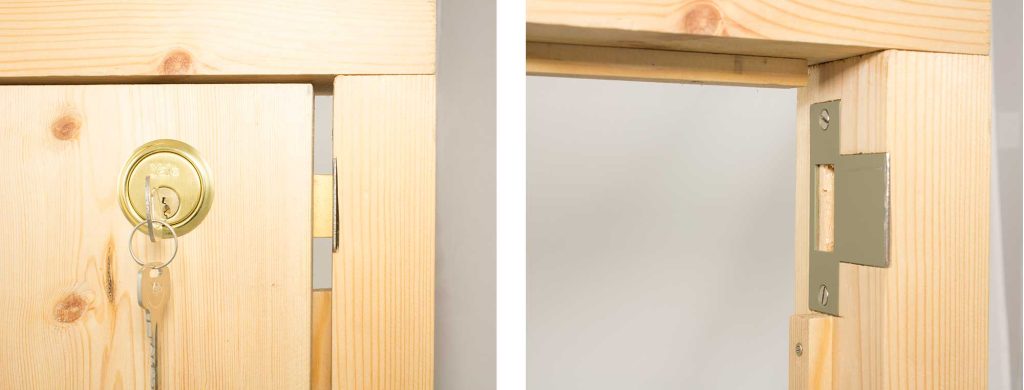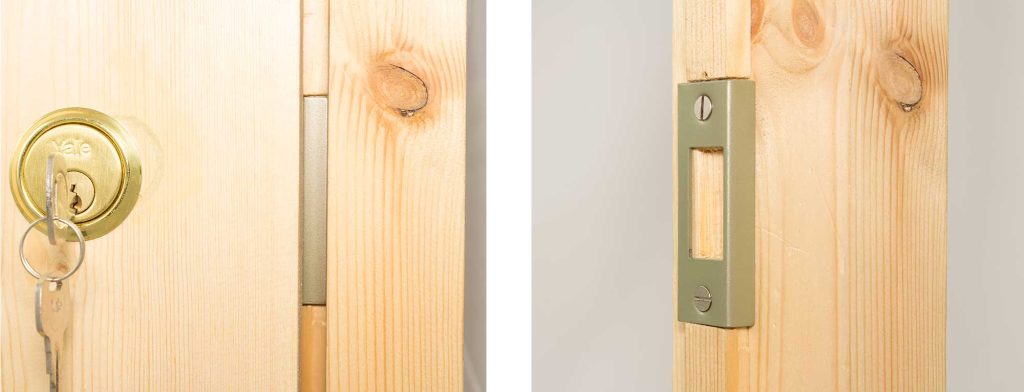Fitting Nightlatches to Outward Opening Doors
Outward opening doors are often a difficult type of door to fit a lock to which is secure and correctly fitted. When fitted incorrect it can look terrible and sometimes not be secure enough.
With most nightlatches the stike plate (keep plate for the frame) that comes with the lock can not be used to work on outward opening doors due to the shape of the recess in the plate. Yale have released 2 types of keep plates designed specifically for outward opening doors.
Below I have described the 2 different types of installation and included a small video of the fitting process.
Replacing an old nightlatch for an outward opening door:
When the nightlatch has already been fitted then the large cylinder hole has been drilled into the door. This is either at 40mm or 60mm from the edge of the door. When fitting the lock in this way to make the door close you will need to cut out a section of the door stop so that the lock can pass through the space and the door can close. Unfortunately this will leave a large gap in the door stop and will also create a visible gap down the edge of the door so you can see daylight through the edge. This can obliviously cause a draft and does not look very nice if used on a external door at your home. Yale have a long tab strike plate that will work with this way of installing the nightlatch. It will give you a better finish on the frame side and will be far more secure than fitting the box strike that comes with the standard inward opening lock.

Installing Nightlatch from New:
When you are installing a nightlatch on a new door you have 2 different ways you can fit the lock. The first is the same as the above so you install the nightlatch to the edge of the door and then you need to cut out the door stop and the above information applies. If you fit the lock this way you would use the Yale Long Tab Strike.
Alternatively you can install the lock in a slightly neater way. If when you install the lock instead of drilling the large 32mm cylinder hole the standard 60mm from the edge of the door, you add the width of the door stop to this (i.e if you have a 15mm door stop you mark and drill the cylinder hole 75mm from the edge) this will allow you to install the lock and have the body of the lock pass next to the door stop so you wont need to cut the door stop out. This means that the latch will lock into the door stop and you can purchase a Yale reversed angle plate that will accommodate the latch.

The important things to think about with this method are:
- Distance to any glass in the door
If you have a glass panel you need to make sure you have enough wood to fit the lock to before you strike the glass. - Fitting a lock without an overhang
Some nightlatches have an over hang at the front of them, (example - Yale 77) these will not be suitable. You will need a lock like the Yale 88, 84, 85 or 89. These are all suitable models that can be reversed.



